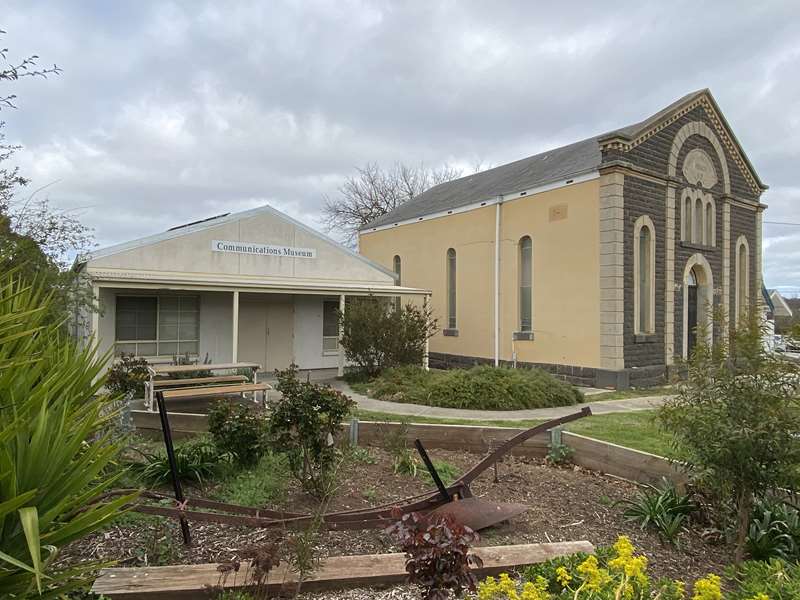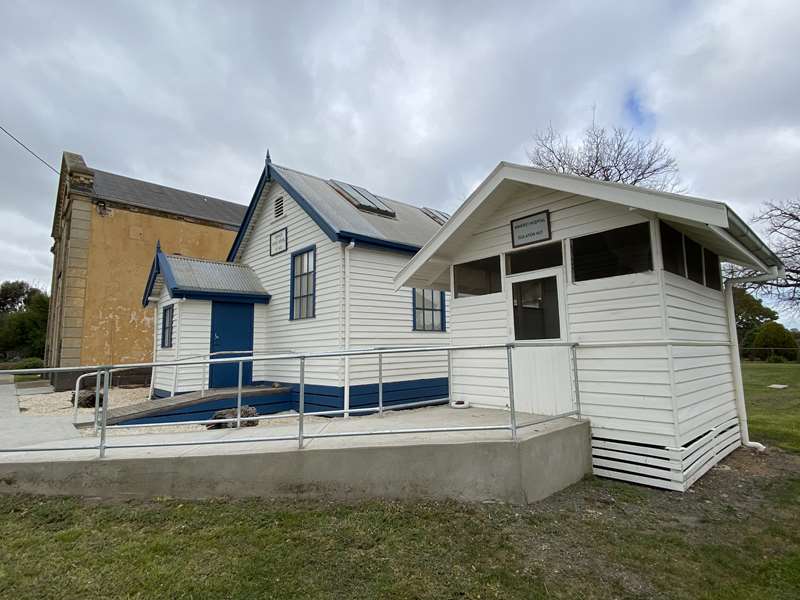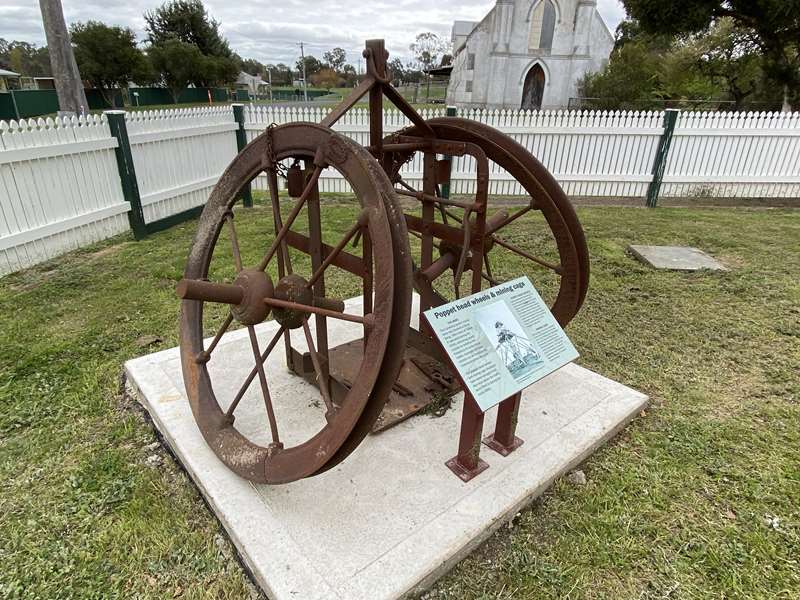Talbot Arts & Historical Museum


Opened in 1984 in the former Primitive Methodist Church (opened 1870), the museum is four museums in one, comprising of the Communications Museum, Dunach School No1412, Amherst Hospital Isolation Ward and the Talbot Arts & Historical Museum.
The Primitive Methodist Church was designed and built in 1870 by local builders and tradesmen. This distinctive Romanesque design bluestone church served a local population where more than half the workforce was involved in surface or deep lead underground mining. The church closed with the declining population in the early 20th Century and later became a clothing factory. In 1984 the building reopened as the Talbot Arts and Historical Museum as the focal point for the town and district's history.
The museums contain a wide range of items of historical interest including photographs, maps, paintings, exhibits and family histories which record aspects of the working like, domestic needs and leisure activities of the people in the early goldfields of the Talbot region. See how the pioneers of the gold mining township met the early challenges of the harsh land and research your own family history.
Communications Museum
An extensive display of historical radio, telephone and television equipment. Come and see radios dating from crystal sets through to elegant Art Deco and modem sets. View Maryborough's original radio station equipment and other communication items.
Talbot Arts and Historical Museum
Photographs, maps, paintings, exhibits and family histories record aspects of the working life, domestic needs and leisure activities of the people in the early goldfields of the Talbot region. See how the pioneers of the gold mining township met the early challenges of the harsh land. Research your own family history.

Dunach School No 1412
This room of the original school building features furniture, books and teaching aids dating from 1874. Read the repressive list of rules for teachers and revisit the terrifying story of the 'Hobyars'. This section is suitable for school group visits.
Amherst Hospital Isolation Ward
An original ward of the Amherst hospital, this building was one of a number used to isolate patients with infectious diseases.
Outdoor Displays

Poppet head wheels & Mining Cage
THE MINE - The Caralulup quartz crystal mine was located at Bung Bong, 10km west of Talbot. It operated during the 1930s, extracting quartz crystals to stabilise the frequency of early crystal radios. Examples of these crystals can be found in the Communications Museum.
The poppet head wheels and mining cage displayed here were salvaged from the mine when the shafts were filled in during the early 2000s.
POPPET HEAD WHEELS - Cables passing over fly wheels at the top of the poppet head created a pulley system for moving the mining cage up and down the mineshaft. These wheels were made in Ballarat by Ronaldson Bros & Tippett, which became one of the most successful engine manufacturers in the southern hemisphere. Made in the mid-1930s they are great examples of the company's early work.
MINING CAGE - Mining cages were used to transport miners and equipment and to bring rock to the surface. Early cage designs were very basic but this one was developed and patented by Peter Denholm of Ballarat in 1865 with new safety mechanisms. This cage was made at Thompson's Foundry in Castlemaine, which become an important business in Victoria's industrial history.
Photos:
Location
17 Camp Street, Talbot 3371 Map
✆ (03) 5463 2167
Email Enquiry
Web Links
→ www.bendigoregion.com.au/visit-maryborough-surrounds-victoria/talbot-arts-and-communications-museum









